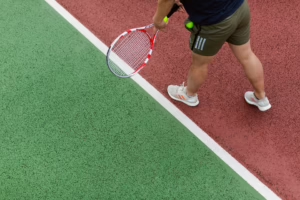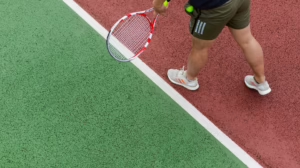Family Fun and Fitness: Why Acrobatic Arts are Great for Kids
Acrobatic arts is an exciting and dynamic form of physical activity that combines elements of gymnastics, dance, and acrobatics. It promotes fitness, flexibility, balance, and coordination while encouraging family involvement and social interaction. This article delves into the myriad benefits of acrobatic arts for children, highlighting its physical, emotional, and social advantages.
Understanding Acrobatic Arts
Acrobatic arts encompass various disciplines, including tumbling, balancing, and manipulation of the body in creative movements. These activities can be performed solo or in groups, making them a versatile option for kids of all ages. Acrobatic arts classes typically incorporate music and choreography, which not only makes learning more enjoyable but also fosters creativity.
The Physical Benefits
1. Overall Fitness
Acrobatic arts improve cardiovascular health, build muscle strength, enhance flexibility, and promote coordination. Engaging in regular physical activity is essential for the healthy development of children. Participation in acrobatic arts classes encourages kids to develop strong and healthy bodies, which are imperative for their overall growth and well-being.
2. Developing Strength and Flexibility
Acrobatic arts require a blend of strength and flexibility. Children learn to control their bodies through various movements such as flips, jumps, and balances. This emphasis on strength and flexibility can contribute to improved performance in other sports and physical activities.
3. Balance and Coordination
Balance and coordination are crucial skills that children develop through acrobatic arts. These skills are not only essential for performing tricks and routines but are also beneficial in daily activities, enhancing a child’s ability to run, jump, and play without risking injury.
4. Increased Endurance
Acrobatic arts training involves a considerable amount of physical effort, which helps build endurance. Children learn to push their limits, and over time, they can perform routines with greater ease and energy.
Emotional Benefits
1. Boosting Confidence and Self-Esteem
Mastering acrobatic skills requires practice and determination. As children learn to perform new tricks and routines, they experience a sense of accomplishment that boosts their confidence and self-esteem. This newfound confidence often translates into other areas of their lives, influencing academic performance and overall social interaction.
2. Discipline and Focus
Acrobatics teaches kids the importance of discipline and focus. Achieving mastery in this art requires consistent practice and dedication. Learning to follow instructions and push through challenges helps children develop essential life skills that can serve them in various situations.
3. Stress Relief and Emotional Expression
Physical activity is known to decrease stress and improve mood. Acrobatic arts provide children with an outlet for emotional expression. Engaging in movement can serve as a form of therapy, helping kids manage their feelings and improve their mental health.
Social Benefits
1. Building Social Connections
Acrobatic arts classes often involve teamwork and group activities. Children collaborate with peers to learn routines, fostering a sense of community and belonging. This social aspect is vital for developing interpersonal skills and building friendships.
2. Encouraging Family Involvement
Acrobatic arts provide opportunities for family bonding. Whether parents attend classes, watch performances, or engage in practice sessions at home, the shared experience can strengthen family relationships. Participating together in physical activities fosters a supportive environment that encourages children to stay active.
A Family Affair: The Role of Parents
Acrobatic arts allow parents to play an active role in their child’s physical development. By engaging in acrobatic activities or attending classes together, families can create lasting memories while promoting fitness.
How Parents Can Get Involved
1. Participating in Classes
Parents can join acrobatic arts classes alongside their children, promoting not just fitness but also quality family time. This can be a fun way for families to learn new skills together.
2. Encouraging Practice at Home
Parents can create a safe space at home for practicing acrobatic skills, encouraging their children to hone their abilities. By sharing the experience, parents and kids can bond and foster a supportive learning environment.
3. Attending Competitions and Showcases
Watching competitions or showcases allows families to celebrate their child’s achievements. These events can be exciting and motivating for kids, encouraging them to continue their acrobatic journey.
Safety Considerations
While acrobatic arts are generally safe, it’s vital to prioritize safety to prevent injuries. Parents and instructors should ensure that proper techniques are taught and that children are training in a safe environment with appropriate supervision.
Creating a Safe Training Environment
-
Qualified Instructors: Ensure that the instructors have appropriate qualifications and experience in teaching acrobatics.
-
Equipment: Use mats and appropriate equipment to reduce the risk of injury.
- Supervision: Ensure that children are supervised while practicing acrobatics, especially at home.
Conclusion
Acrobatic arts provide a wealth of benefits for children and families alike. From physical fitness and improved coordination to emotional confidence and social connections, participating in acrobatic arts serves as a fantastic way to foster well-rounded development for kids. As families engage in this dynamic art form together, they create cherished memories and foster a love for physical activity that can last a lifetime.
By choosing acrobatic arts, families can embark on a journey of fun, fitness, and connection that enriches their lives and nurtures healthy habits for the future.
Footnotes
- Fitness & wellness benefits of acrobatics
- Scientific studies on physical development through gymnastics
- The importance of family involvement in children’s activities
- Psychological benefits of physical exercise for children
- Building a supportive environment for children’s growth
(Note: The indicated footnotes should be appropriately filled with modern sources, citing research papers, articles, or other credible references once the content is further developed and sourced.)


























Add Comment